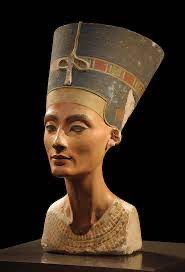Legendary artefacts have been stolen, traded, and transported far from their original locations for millennia. Looted from colonised people, many of the artefacts kept in museums such as the Metropolitan Museum of Art in New York City and the British Museum in London. Governments and advocates for repatriation have demanded the return of internationally famous artefacts such as the Parthenon Marbles, the Rosetta Stone, and the Benin Bronzes in recent years.

Madqdala Crown
In 1868, British forces captured the mountain fortress of Maqdala as part of a larger conquest of the Ethiopian empire. In addition to more than a thousand manuscripts, which were carried on the backs of 15 elephants and hundreds of mules, the soldiers also took an ornate gold crown.The crown was likely given to an Ethiopian church as a gift from King Iyyasu II and his mother, the Empress Mentewwab, according to the Victoria & Albert Museum, where the artifact now resides.The filagreed gold crown's bottom two tiers depict the 12 Apostles, and the top tier are the four Evangelists who wrote the Gospels: Matthew, Mark, Luke, and John.In 2007, the Ethiopian government officially demanded the return of the crown and various other artifacts.
In 1868, British forces captured the mountain fortress of Maqdala as part of a larger conquest of the Ethiopian empire. In addition to more than a thousand manuscripts, which were carried on the backs of 15 elephants and hundreds of mules, the soldiers also took an ornate gold crown.The crown was likely given to an Ethiopian church as a gift from King Iyyasu II and his mother, the Empress Mentewwab, according to the Victoria & Albert Museum, where the artifact now resides.The filagreed gold crown's bottom two tiers depict the 12 Apostles, and the top tier are the four Evangelists who wrote the Gospels: Matthew, Mark, Luke, and John.In 2007, the Ethiopian government officially demanded the return of the crown and various other artifacts.

Nefertiti
The bust of Nefertiti, the wife of the Egyptian pharaoh Akhenaten, is one of the most iconic works of ancient Egypt. Nefertiti, which means "the beautiful one has come forth," was known for her otherworldly beauty.The limestone bust, dating back to 1345 BCE, was discovered in the workshop of Thutmose, who was thought to have been the official court sculptor.In 1913, a German archaeologist named Ludwig Borchardt found the bust, and, in violation of rules that prohibited smuggling, hid the bust under a layer of clay and stole it out of the country, Zahi Hawass, the former minister of the Egyptian government's antiquities affairs, claimed. The bust is now on display at the Neues Museum in Berlin, Germany, as its "undisputed star," per the museum.Since the bust was officially unveiled in Germany in 1924, Egyptian authorities have called for its return. But Germany claims the bust was taken out of Egypt legally, and has insisted that the bust is too fragile to transport.A spokesperson for the Neues Museum confirmed "there is no change in the status quo."
The bust of Nefertiti, the wife of the Egyptian pharaoh Akhenaten, is one of the most iconic works of ancient Egypt. Nefertiti, which means "the beautiful one has come forth," was known for her otherworldly beauty.The limestone bust, dating back to 1345 BCE, was discovered in the workshop of Thutmose, who was thought to have been the official court sculptor.In 1913, a German archaeologist named Ludwig Borchardt found the bust, and, in violation of rules that prohibited smuggling, hid the bust under a layer of clay and stole it out of the country, Zahi Hawass, the former minister of the Egyptian government's antiquities affairs, claimed. The bust is now on display at the Neues Museum in Berlin, Germany, as its "undisputed star," per the museum.Since the bust was officially unveiled in Germany in 1924, Egyptian authorities have called for its return. But Germany claims the bust was taken out of Egypt legally, and has insisted that the bust is too fragile to transport.A spokesperson for the Neues Museum confirmed "there is no change in the status quo."

The Bangwa Queen
The Bangwa Queen is a wooden sculpture of spiritual significance to the Bangwa, a people indigenous to what is now Cameroon in Africa. These types of figures, called lefem, personified special ancestors and were symbols of authority, according to scholars.Around 1899, German soldiers invaded the palace of Fontem Asonganyi and looted the Bangwa Queen, along with other sculptures. The sculpture wound up at the Ethnological Museum of Berlin before being sold to an art dealer.Art collector and businesswoman Helena Rubinstein acquired the Bangwa Queen in the 1930s. From there, it passed hands until France's Dapper Foundation bought the statue for $3.4 million.The Bangwa people have since sought its return. Although the Dapper Foundation closed its Paris Museum in 2017, it has stalled talks over the repatriation of the sculpture.
The Bangwa Queen is a wooden sculpture of spiritual significance to the Bangwa, a people indigenous to what is now Cameroon in Africa. These types of figures, called lefem, personified special ancestors and were symbols of authority, according to scholars.Around 1899, German soldiers invaded the palace of Fontem Asonganyi and looted the Bangwa Queen, along with other sculptures. The sculpture wound up at the Ethnological Museum of Berlin before being sold to an art dealer.Art collector and businesswoman Helena Rubinstein acquired the Bangwa Queen in the 1930s. From there, it passed hands until France's Dapper Foundation bought the statue for $3.4 million.The Bangwa people have since sought its return. Although the Dapper Foundation closed its Paris Museum in 2017, it has stalled talks over the repatriation of the sculpture.